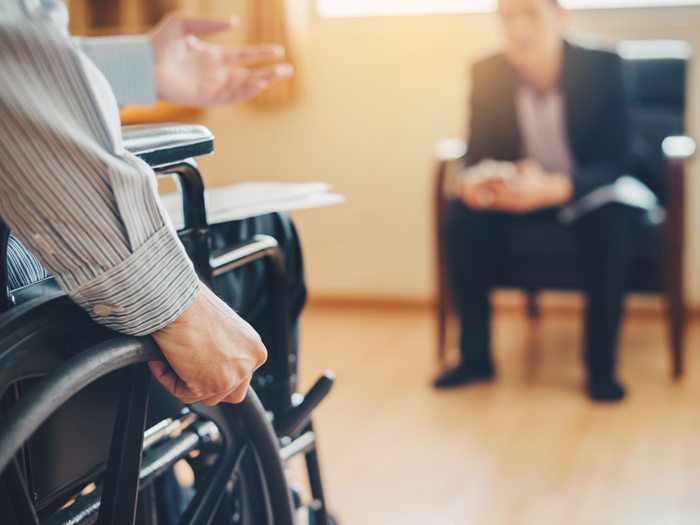Stop Loss Time Injuries from Spiraling: Swift Return to Work Can Save Lives

When a worker finds themselves stuck at home after a workplace injury, they can feel disconnected from the world around them. Their days can become directionless without the routine of going to work and they may lose contact with their friends and colleagues from the office.
Eventually, a lack of purpose can start to set in as they go without these key social interactions.
“Injuries can turn somebody’s world upside down, and can be very upsetting,” said Mary Christiansen, CPDM, senior manager of legal and workers’ compensation and disability management at Southern California Edison.
“They’re not used to being at home. They want to be out working. They have a reduced income. They’re sitting on the couch and they’re getting out of shape. Their family dynamics change, because now they are at home and they aren’t seeing themselves as the big breadwinner.”
These changing dynamics can cause physical injuries, like a broken bone or sprained wrist, to bring on psychological injuries such as depression. A 2013 study published in BMC Public Health found that people receiving workers’ compensation as a form of medical payment were 33% more likely to develop depression than people without occupational injuries.
For injured workers taking opioids, these effects can lead to drug addiction, abuse and even death. Lost time injuries almost tripled the hazard for drug related deaths in women and resulted in a 29% increase in drug related mortality hazard for men, according to a recent study.
At WCRI’s Annual Issues & Research Conference, the panel session “Prioritizing Mental Health for Workers Injured on the Job” will dive into the relationship between occupational injuries and behavioral health concerns.
Workplace Injuries Bring on Mental Health Problems
A variety of factors, including financial burdens, physical fitness and the difficulty of pursuing workers’ compensation claims, can cause physical occupational injury claims to take on behavioral health components.
“People who had workplace injuries and are out of work for a reasonable length of time, can get depressed by the loss of work. Sometimes they lose their job, sometimes they’re not earning money for extended periods of time, or have really reduced income,” said Dr. Leslie Boden, professor of environmental health at Boston University. Boden has been researching the link between depression, suicide, addiction and workplace injuries for the past five years.

Leslie Boden, PhD.
Professor of Environmental Health
Boston University
If left untreated, feelings of depression resulting from a workplace injury can lead to addiction and suicide.
A study Boden co-authored in the American Journal of Industrial Medicine reported that “work-related injuries may contribute to two alarming public health trends over the past two decades: the rapid growth of deaths from both opioids and suicides.”
“I think that the most interesting things that we’ve found have been really striking increases among both men and women in deaths related to suicide and opioid overdoses,” Boden said.
“If you suffer from pain over some longer period of time, that can lead to depression … If people are working in pain, and don’t want to take time off from work, they may self medicate as a result.”
Increased risks of sucide and drug-related mortality are especially acute among women. Boden’s research found that lost-time injuries resulted in a 92% increase in mortality hazard due to suicide among women, compared to a 72% increase for men.
In addition to the physical and emotional consequences for injured workers, leaving mental health components of physical injury claim unaddressed can lead to increased costs later on for workers’ compensation payers.
An International Risk Management Institute article estimates that substance abuse and mental health disorders cost employers between $80 billion and $100 billion in indirect costs associated with absenteeism and reduced productivity.
“If workers don’t recover, these claims can drag on for years and years and years,” Christiansen said. “They can be extremely costly, and an employee may never return to work.”
Treating the Whole Person
Adopting a biopsychosocial approach to claims management can help address the psychological components of physical injury claim.
“We really need to understand and recognize that there is an emotional and psychological component to it, and then to treat that,” said clinical psychologist Dr. Kenneth Larsen, DMin, ABMP.

Kenneth Larsen, DMIN, PhD, ABMP
Clinical Psychologist
New England Baptist Hospital
Larsen has spent over 20 years working with injured workers who have suffered catastrophic injuries or incidents of workplace violence.
“When a person has an injury to a limb or an organ or a part of the body, the limbic system within the brain reacts and reacts strongly, particularly the thalamus and the amygdala, and it puts an imprint of trauma within the brain that needs to be reprocessed,” he said.
Larsen has used a variety of treatments on injured workers with mental health and substance abuse disorders including cognitive behavioral therapy, non pharmacological management of chronic pain and trauma theater, which helps patients reduce flashbacks, nightmares and intrusive thoughts associated with PTSD.
He also works to prepare injured workers for return-to-work using mental rehearsals.
“When they the patient is led through a mental rehearsal of returning to work prior to going back into their workplace, they’ve then have already encountered the challenges they think they’re going to have. And then I have them see themselves address these challenges with calmness, confidence, and competence,” Larsen said.
Investing in mental health care before an injury occurs is financially beneficial for employers as well. The World Health Organization found that for every dollar invested in treatment of common mental health conditions, such as depression and anxiety, there is a $4 return on investment due to improved health and productivity.
“Psychological safety is a big thing that we’re working on as a company, just to make sure people don’t suffer psychological injuries or undue stress while they’re at work,” Christiansen said. “That means they’re not working under undue stress. They aren’t burdened or overworked. They have reasonable deadlines.”
As part of this approach, her employer, Southern California Edison, has developed a scoring system, which helps identify whether a worker needs psychological support services post-injury.
After a worker experiences an injury, the company uses a scoring system to determine whether they’re at risk for a psychological injury and need cognitive behavioral therapy as well as well as medical treatment.
“That scoring lets us know if maybe this employee is going to have some coping issues,” Christiansen said. “If they score high, then we work with their doctor to get a referral, and try to get them some assistance.”
At the end of the day, if payers focus on providing injured workers with the best care possible, they will be able to tackle psychological components of physical injury claims.
“Dr. Lew Millender, an orthopedic surgeon who contributed so much to workers comp field would always say, ‘if you don’t love your patients, they’re not going to get better,’” Larsen said.
“That is really the main thing that providers need to know, is that they have to have respect, they have to actually listen, make the connection, have an attunement with the patient that expresses compassion and care for them in a way that often is not there.”
The panel “Prioritizing Mental Health for Workers Injured on the Job” will run on March 6th at WCRI’s conference in Boston. Speakers include Christensen, Boden, Larsen and Francis X. Callahan, Jr., president, Massachusetts Building Trades Council (MBTC). &










